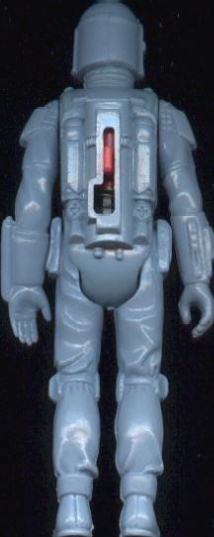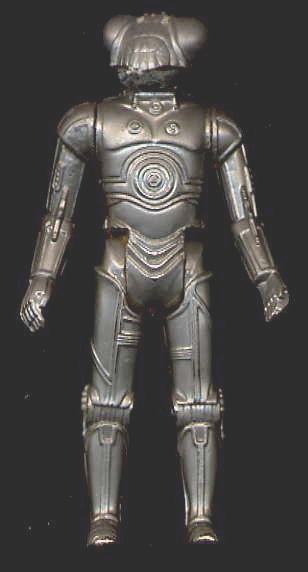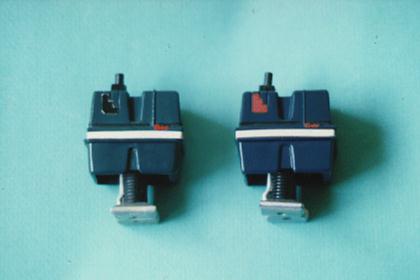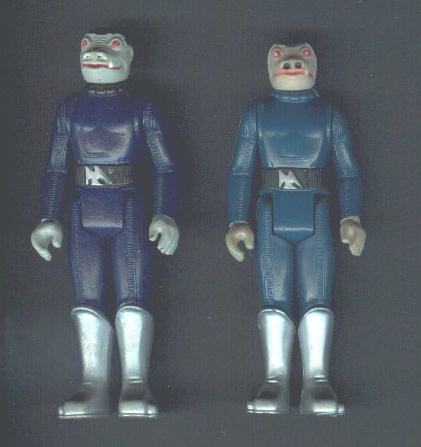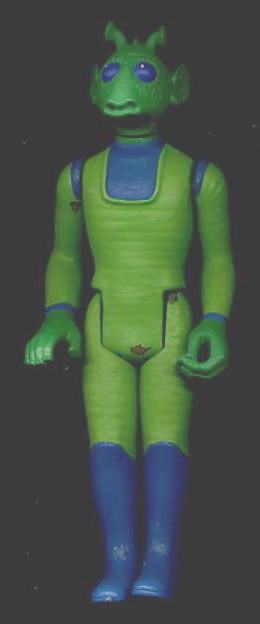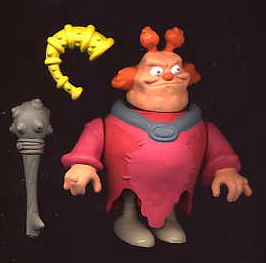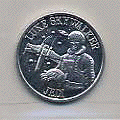
Kenner Prototypes
By Gus Lopez
We've all heard about Star Wars prototypes, particularly the Kenner prototypes gracing the pages of Tomart's Action Figure Digest, Action Figure News and Toy Review, and Toy Shop regularly. For the collector who has everything, prototypes offer a vast area of collecting where each new piece is likely to be something unknown and undocumented. Kenner's prototypes offer a glimpse at the production process of some of the most popular collectibles in the Star Wars universe.
I have to admit that for me, prototypes are the most exciting area of Star Wars collecting. Although it is common to hear record-setting prices that prototypes fetch in Toy Shop auctions, there are still some incredible deals that come up on old Kenner prototypes. Being well-connected is probably a more important factor in acquiring prototypes than having loads of money. The problem is that with one of a kind pieces, once something is offered on the market, it's quite possible it will vanish into someone's collection like a black hole and will never again resurface.
Collectors who have rediscovered Star Wars in recent years are likely to be bummed they missed out on some incredible deals such as POTF proof cards and micro collection hard copies that sold on the secondary market for very cheap just a few short years ago, however I claim there are still great deals out there. For instance, consider the small Luke X-Wing coin that Kenner had planned to use as a mail away promotion. It is estimated that there are 300 of these coins in existence, and it is not difficult to find these at shows and in Toy Shop for around $20-30. For a prototype, this is a fairly well documented piece since all the coins trace back to single source with Kenner contacts. This dealer sold them cheap and for the most part, finished off his supply. Now, stop and think about this for a second....only 300. That's really not very many, and at $20 each, that's quite a deal. While there are no guarantees on what things will fetch in the future, I have a feeling that these coins could also follow the same familiar pattern of prototypes before them, and when protos vanish, they have a tendency not to see the light of day for some time.

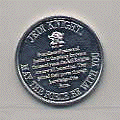
Another variety of prototype that is quite affordable to any collector are micro collection first shots. First shots are the initial pieces of a production run that allow the company to test the product or make any last minute alterations. First shots come usually have some characteristics to differentiate them from production pieces such as unpainted or missing copyright dates. In the case of micro collection figures, the first shots are unpainted pieces of the metal figures that came with micro collection playsets. These figures can still be found for $2-10 each.
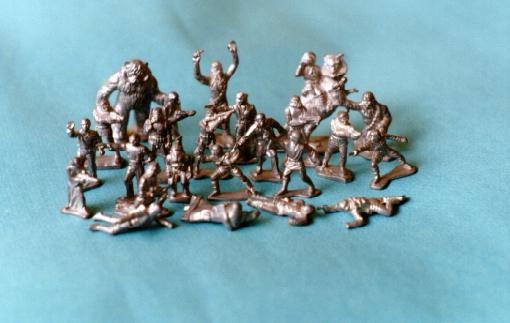
Packaging prototypes can be quite interesting if a product was never released in that particular style of package. For instance, there's a version of the Darth Vader's Star Destroyer playset with Leia Bespin held captive by Vader instead of Luke Bespin on the box photo. Prototypes were made for the A-Wing vehicle in Power of the Force packaging and the Tatooine Skiff in Droids packaging among others.
One of the most popular packaging prototypes is fortunately one of the most common prototypes in existence -- the Revenge of the Jedi proof cards for Kenner figures. Since George Lucas changed the title of the movie at the last minute, Kenner had produced action figure cards and boxes using the Revenge of the Jedi name and logo. Many of these prototypes still exist today as printer's proofs, which are test runs of the package printing. Perhaps the reason so much of the Revenge packaging survived was that it was obvious to Kenner employees back then that any item with the word "Revenge" was going to be a hot collectible, and few were discarded. In the past year, Revenge of the Jedi prototype cards have sold for $50-100 and some people have even been able to put together complete sets of these cards.
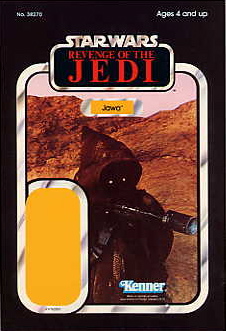
It turns out that proof cards for other series of Star Wars figures are even more difficult to find than the Revenge cards, but a few of these have survived. For instance, it is estimated that there are about 6 Power of the Force card proofs for each character that was planned for the series.
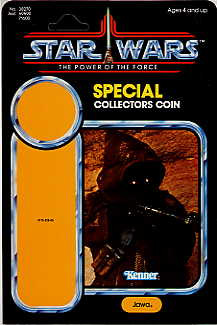
These proofs cards can be particularly interesting for figures that were never issued on POTF card. In the 1985 Kenner Toy Fair Catalog, Kenner had plans to issue the entire action figure line on POTF card. Less than half of these figures were issued on POTF card, so naturally, the proof cards for figures that were never released on POTF card are much more interesting than the proof cards for figures that were available on these cards. I acquired this Bib Fortuna POTF card in order to have one representative piece of a figure that was never issued on POTF card. I traded about $400 in merchandise for the card. Although they have sold for as much as $1000, if I had hunted these down several years ago, it would have been possible to buy them for only $1 each.
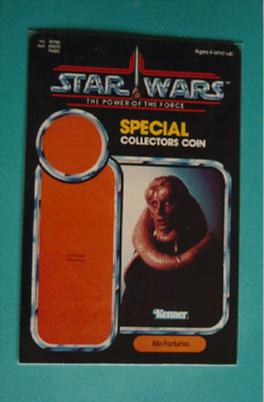
While it would be nice to have a complete set of these POTF cards, it would take a great deal of money and luck these days to be able to hunt them down at the prices and availability that they've exhibited recently. Since most prototypes are so scarce and their availability is unpredictable, it almost impossible to focus a search on a particular prototype piece. Unless you're independently wealthy, you cannot buy every prototype you encounter on the market, and I don't know a single prototype collector who employs that strategy. For these reasons, I strive for variety in my prototype pieces, to cover a range of different items. I look for pieces from the micro collection, action figures, vehicles, or even toy lines that never hit the market. I also look for a cross section of prototype pieces: first shots, unreleased production samples, hard copies, wax sculptings, packaging prototypes, one of a kind conceptual pieces, and mold tests. These different varieties of prototypes give the collector a flavor for the different phases of toy design and production, and make the collection rich and varied.
While it's fun to collect a wide variety of prototypes, it can also be interesting to explore an area in some depth. For instance, one of my specialties is C-3P0 storage case prototypes. I chose the 3P0 case for several reasons. First, there are numerous varieties of 3P0 case prototypes on the market which are not too difficult to track down. Second, since the 3P0 case isn't exactly the hottest production Star Wars item ever, there isn't overwhelming demand for these prototypes with respect to other toy prototypes (e.g. action figure protos). Finally, these are huge and obvious prototype pieces compared to say many action figure prototypes which can be small and the characteristics subtle.
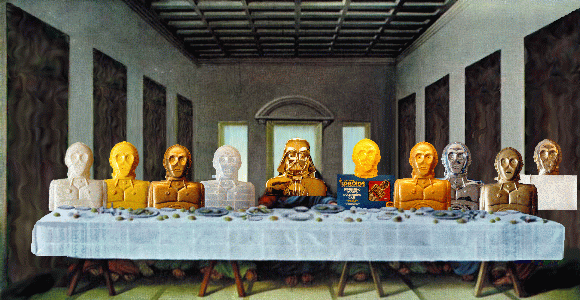
All ten of these cases are prototypes differing from the production ROTJ C-3P0 storage case. From left to right: C-3P0 White Mold Test Case, a loose Droids C-3P0 Case, 1996 C-3P0 Talking Electronic Case Toy Fair prototype, C-3P0 Clear Mold Test Case, the legendary Gold Vader Case, a MIB Droids C-3P0 Case, a 1996 C-3P0 Case Mold Test, a Silver C-3P0 Case, C-3P0 Dull Gold Color Test Case (with unsculpted eyes), and C-3P0 Packaging Test Case (with prototype packaging and unsculpted eyes). The gold Vader case is here because it was used to test the metallization process for all the 3P0 cases. There is also a prototype case not pictured here that is an alternate C-3P0 Clear Mold Test Case with subtle differences from the one pictured above, a Hardcopy C-3P0 Case used for Kenner catalog photography, and an unboxed version of the Early C-3P0 Case Sample that was gold-metallized like the production case. Also, check out the C-3P0 Storage Case Box Flat. This set of cases contains all the known varieties of C-3P0 case prototypes. All of the cases and packaging were acquired from different sources leading back to Kenner.
Another possibility for depth in one's prototype collection would be to own a 4up wax, 4up unpainted hard copy, 4up painted hardcopy, first shot, and painted figure for a particular micro collection piece. Similarly, for the action figure line, it would be possible (although extremely difficult) to track down a wax, hard copy, and first shot, for a particular action figure to exhibit the various phases of the toy's production. Finding all these pieces for a particular toy is like having lightning strike several times in the same place, but it has happened before. My advice for those who seek depth is to pick some piece that's obscure and relatively available. Sometimes these different phases for an item can be found together from a single source.
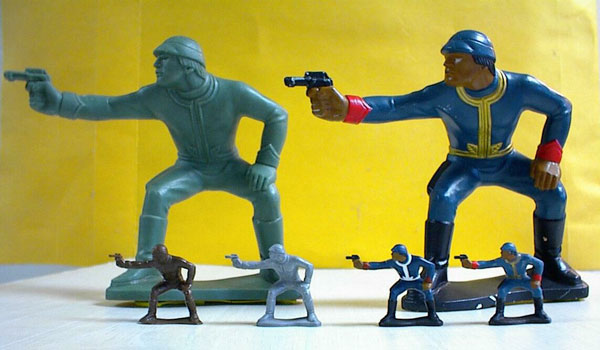
The rocket-firing Boba Fett is perhaps the most well-known
Star Wars prototype. They have turned up in two varieties,
the unpainted L-slot first shots, and the painted J-slot
figures. In the past year, the very few that have turned up
have sold for $3000 to $7000, although the greater challenge
is finding an authentic one for sale than saving up the
money. It is estimated that there are between two and three
dozen of these Boba Fett prototypes in collectors' hands
today. The subject of rocket firing Boba Fetts could occupy
an entire chapter of a book, so for more detailed information
on this legendary piece, consult Tomart's Action Figure
Digest #20 and #21. Here's a picture of my Boba Fett
unpainted first shot:
I won't even begin to tell you how much I spent on this
puppy, but I will emphasize one thing -- I spent a lot on this
figure because I was 100% sure it was an authentic piece. I
had it independently verified by several sources (including
Kenner employees) and compared even the most minor
details to every photo of rocket firing Fetts I had ever seen.
If I had even one question of its authenticity, I would not
have bought it. There are many more fake rocketfiring Boba
Fetts out there than real ones. There is no prototype more
often faked than these figures.
Given that prototypes are faked from time to time, how is
the buyer supposed to know that they're getting a genuine
Star Wars prototype? There are some basic rules of thumb
you can use to check out a piece:
One of the things I do for every prototype piece in my
collection is to keep a file of all the information on each
piece. This file contains photographs, receipts, Kenner
business cards, and articles about the item. This serves as an
excellent paper trail should you ever decide to sell one of
your prototypes and need to convince a buyer that it's indeed
genuine.
Buying prototypes certainly requires some taste. There are
plenty of lame Star Wars prototypes on the market which are
either overpriced or marginally different from production
pieces. For instance, a couple of years ago, there was an
auction for an Imperial Troop Transport first shot.
Minimum bids were over $1000. There are quite a lot of
more interesting prototype pieces that can be bought for less
than that!
Clearly, unproduced toys and packaging are the most
interesting prototypes to find. In some cases, these involve
features that were never introduced (e.g. the rocket firing
Boba Fett), molds that were later changed, or a toy that
simply never hit the market (e.g. Droids C-3P0 case).
Consider this early Deathstar Droid prototype:
This toy was actually featured in some Kenner literature, but
the mold was entirely changed before the item went into
production. On this prototype, a C-3P0 body was used but
with a different head mold for the deathstar droid. I was able
to find this for my collection since I presented people with
images from an early German catalog illustrating some
unproduced figures, and I let everyone know that I was on
the lookout for these pieces. It's the only one I know of in
existence.
The Power Droid is similar in that it uses a completely
different mold from the production piece, although in this
case, the differences are more subtle:
The detail along the edges and vents is clearly different from
the production toy when examined up close. Perhaps
Kenner had the item resculpted because they were
unsatisfied with the detail on the first piece. Who knows?
The color of the plastic and the decals are also different.
Figure prototypes from the first movie are the most difficult
to obtain since very few survived and there are numerous
stories of Kenner employees being forced to destroy
samples in the late 70s. There are a handful that have
survived such as these hard copies for blue Snaggletooth
and Greedo from Chris Georgoulias' collection:
Most of the action figure prototypes that turn up are the later
figures, which in some cases can be quite interesting if the
figures were unproduced Ewoks and Droids series figures
from the 1986 Kenner Toy Fair catalog. There are quite a
few of these prototypes floating around as both hard copies
and production figures, and I know a couple collectors who
have come close to completing a set. There are even some
samples of these figures on card! Here is a photo of a Bondo
hard copy from the Ewoks series:
There is an almost endless array of unproduced items that
sometimes turn up in Star Wars collections. Some of the
more well-publicized unproduced Kenner items that came
close to release were the Rebel Blockade Runner ship, the
Lando Calrissian doll, the talking Yoda doll, the Bespin
Torture Chamber and Hoth Bacta Tank Micro Collection
playsets, and the White Witch vehicle from the Droids
cartoon. Although these toys were featured in some Kenner
literature, few, if any, prototypes are known to exist today.
There are also numerous action figures that Kenner
proposed that were never released: Chewbacca's family
(from the Holiday Special), Grand Moff Tarkin, Leia as
Jabba's Slave, Uncle Owen, and Gargan, to name a few.
The new Kenner line of Star Wars action figures has
certainly made prototype collecting more complicated.
Since many of the new toys use the same molds as the old
toys, it is sometimes difficult to tell the old from the new.
But how do you know the good stuff from the bad? There are
some ways to tell the differences (such as by judging from
the colors of the plastics), but this screams out for more
documentation on these pieces.
The value of the Star Wars prototypes is well-known around
Kenner these days and as the new toy line started to come
out, loads of prototypes for this line began to hit the
secondary market. Kenner has responded with numerous
internal documents making it clear to employees that taking
prototypes to resell to collectors is considered theft. There
are even guards posted at the doors of the engineering shops
to ensure that prototypes do not leave the premises. In the
"old" days, there was no official company policy on taking
home these pieces, but Kenner has clearly changed their
policy towards this practice. It remains to be seen whether
they'll be able to keep these new prototypes away from
collectors' hands, but fortunately for collectors of the
original line, there are plenty of samples that left Kenner
during the days of "Open Door Policy".
